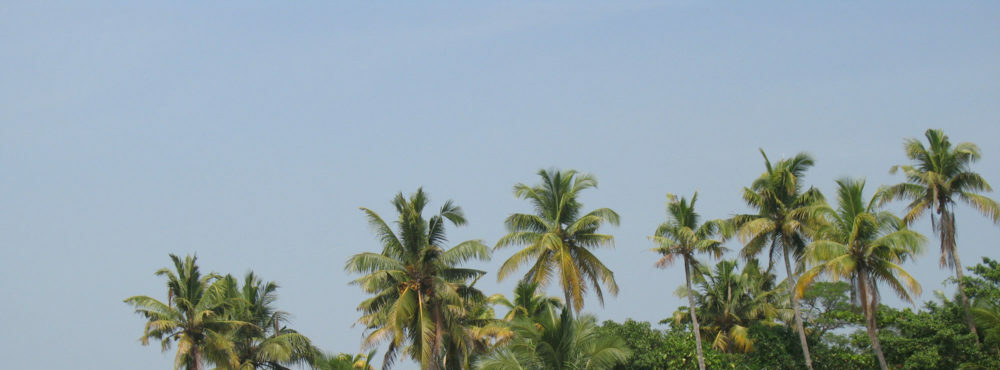
Green Infrastructure is Critical Infrastructure – time for some guidance for National DRR plans
-
Community resilience
In May, leaders at the Global Platform on Disaster Risk Reduction (DRR) agreed to capitalise on ecosystem-based approaches and leverage the complementarity across blue, green and grey infrastructure for achieving risk-informed development. In support of today’s International DRR day which focuses on ‘reducing disaster damage to critical infrastructure and disruption of basic services’, we offer some guidance to governments for incorporating green infrastructure in National DRR plans that are due in 2020.
Whereas the Sendai Framework for DRR explicitly includes green infrastructure as part of critical infrastructures, water engineering practice shows little efforts to reconcile grey, blue and green infrastructure to optimise solutions. Fortunately, decision-makers and engineers increasingly make a compelling (business) case for working with nature, recognising that ecosystems are humanity’s first line of defence against extreme weather events, and deliver myriad of co-benefits vital to adapting to our unfolding climate emergency. In fact, without securing our natural resource-base other measures will be doomed to fail.
The case of Kerala
The case of the beautiful southern India state of Kerala which was devastated by unprecedented floods in August 2018 is striking. As many as 0.2 million people were rendered homeless, over 10,000 kilometres of roads damaged, 2.8 billion US dollars in economic losses, nearly 500 lives lost.
The floodwaters came from the lake and across wetlands into communities. But when the water was released from the overloaded dams, it had nowhere to go. The lakes and wetlands that previously would have absorbed floods from abundant rains have been dyked and drained to make rice fields, industrial estates, tourist resorts and cities. Many of the mangroves which buffered against coastal erosion, supported biodiversity and fisheries grounds, have been removed to make way for tourist lodges. The areas wherein wetlands reclamation had been most significant were also the ones to bear the severest of the impacts. In other words, the flood is man-made.
Measures for Kerala that India should prioritise in its National DRR plan:
To reduce the flood risks, we should remove all the encroachments and integrate wetlands as nature-based solutions in plans for urban reconstruction and flood risk reduction. Following the four priorities for action of the Sendai Framework, we recommend:
Priority 1: Understanding Disaster Risk
The full range of ecosystem services and biodiversity values and connectivity within the landscape should be assessed and integrated into sectoral management interventions, rather than by singular approaches such as for recreation or fisheries or water storage as conventionally done.
Disaster risk assessments should analyse the water storage capacity of built and natural wetlands (dams, lakes, wetlands and other water bodies) to deal with peak flows/extreme events.
The ‘Rebuilding Kerala Initiative’ should involve wetland experts to ensure the complexity of wetland systems and their connection to drainage systems is well understood in its delineation of wetlands, enforcing the Wetland Rules 2017 to protect wetlands in Kerala larger than 2.25 ha.
Priority 2: Strengthening disaster risk governance to manage disaster risk
The proposed river basin authority (under the Kerala Rebuilding Initiative), should bring in new actors including municipal corporations, urban planners as well as the State Wetland Authority in its assessments and planning.
Priority 3: Investing in disaster risk reduction for resilience
The ‘Rebuilding Kerala initiative’ should identify, integrate and help finance wetland conservation, rehabilitation and sustainable use measures from upstream to downstream in city development plans, district disaster management plans, land use records and village development plans.
Priority 4: Enhancing disaster preparedness for effective response and to “Build Back Better” in recovery, rehabilitation and reconstruction
The Rebuild Initiative in Kuttanad aiming to develop livelihoods for increasing water and food security in the region should consider the entire landscape in its planning, and encourage development based on improved ecosystem conservation management and climate resilience, from upstream to downstream. Often infrastructure and development projects fail to consider their overall impact on wetlands and to recommend appropriate compensation measures.
Priority areas for sustaining and restoring wetlands in Kerala:
- Wetland regimes that affect estuaries, such as through restoration of estuarine mangroves through sustainable aquaculture.
- Integrated master planning for the Kuttanad area should apply Living with Water principles. To fund wetland protection activities, income can be generated from wetlands eco-tourism (the backwaters of Kerala generate around 6,000 million Indian Rupee).
- Urban DRR planning. Analysis of published land use and land cover data from 22 cities by Wetlands International South Asia indicates that during 1970 – 2014, every square kilometre increase in built-up area caused the loss of 25 ha wetlands, with most rapid loss in New Delhi, Bangalore, Chennai, Mumbai and Hyderabad, contributing to droughts and extensive damage during floods, such as to the Chennai floods in 2015 with economic losses amounting to over $ 2.2 billion.
Custom Reporting and Monitoring targets for green infrastructure
Finally, use the opportunity of setting custom Reporting and Monitoring targets and indicators to the Sendai Monitor to enable the better reporting on ecosystem losses and progress made on nature-based solutions. In the Sendai Monitor, the opportunity for reporting on ecosystems is currently limited to monitoring of impacts on green infrastructure caused by disasters through the green infrastructure related indicators in D-4 and C-5.
